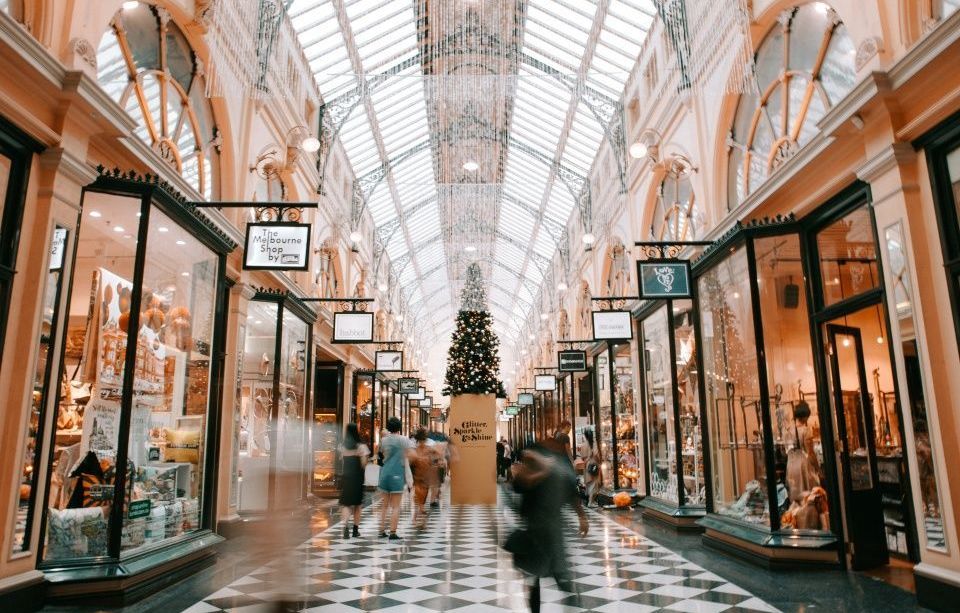9 Types Of Signage Your Business Need
Posted on 24th January 2020 at 12:37
Signs are powerful tools for business--when used strategically. Here are 9 types of signs that can help land sales and keep customers coming back. Much has been said about the basics of sign design. The wealth of research online on colour theory, kerning, font, and sizing means anyone can make decent looking signage. Yet effective signs are more than just aesthetically pleasing.
Placed strategically, signs are powerful tools for enhancing a customer’s experience. Proper placement will be especially key for retail in the coming decade as more of the next generation’s customers troop back to brick-and-mortar stores over online to do their shopping.
Below are the different types of signs you can use to support sales and win over shoppers, from the moment they step foot into your store up until they ring out at the till.
1. Outdoor posters
Outdoor signs have their work cut out for them--you only get a few precious seconds to turn a customer’s curiosity into a potential sale. Your signs need both stopping power and informative appeal.
One way to present information through a visually appealing way is through posters. But don’t make the mistake of loading these with text. Entice customers by telling a visual story. If you’re a clothing store, display items on promotion with prints of full, styled outfits. Furniture stores can take a page out of lifestyle magazines with artfully laid out furnishings.
2. Informational signs
Informational and directional signs help your shoppers find what they’re looking for faster. And while it may sound like you’re only showing them the exit sooner, directional signs actually help keep the customer inside the store. A confused customer is a frustrated customer: the main reason shoppers leave is because they can’t find the item they want.
So help them out with strategically placed maps or information kiosks. Aside from being useful, these signs can also be a good opportunity to let customers browse your wares at their own pace, instead of getting overwhelmed with a hedge maze of products.
Directional signs are typically affixed permanently on walls. But while helpful these are often not given a second glance. Break the monotony and refresh a customer’s attention by experimenting with printing or hanging signs on uncommon--yet obviously visible--areas.
3. Mood-setting LED displays
Light is a powerful tool that can increase sales and even help you connect with your target audience. People also tend to spend more time in areas lit by warm hues as opposed to cold, white light. The right kind of lighting can encourage your target customers to hang around for longer and spend more, as found by Zumtobel, a German fashion retailer.
Retailers can use backlit displays to showcase seasonal items, or create more eye-catching visuals for promotion. You can also use warmly-lit signs in areas you want to encourage browsing or lounging.
4. Signs at the checkout
Just because the customer is at the till doesn’t mean the opportunity to add items into their baskets is over. On the contrary, the cash register is one of the most natural points in the store to make a sale--anyone who’s waited through a queue is ready to spend.
Selling at the register works best with small and inexpensive items. Further encourage customers to grab something off the counter before they leave with eye-catching signage.
5. Customer reviews
Today’s purchases are driven by social proof--reviews, testimonials, and comments. Around 88 percent of customers trust online reviews as much as recommendations by friends and family.
Leverage the power of social proof by placing positive, authentic quotes from customers around your store. Alternatively you can also integrate QR codes that take customers to a product’s page on Amazon or a blog review. If you’re carrying similar products inside your store, boost the appeal of best-sellers by labelling crowd favourites.
6. Small labels on shelves
There’s a lot of focus on storefront and outdoor retail signage. Yet small labels, placards, and signs can also shine tucked away on shelves and between aisles. Signage can be even more powerful than discounts for making sales. Regular priced merchandise when signed can outsell items on clearance that are not signed, finds a study by Brigham Young University.
Small labels can also help items resonate with specific target audiences. Draw attention to green products by sticking them with a sign that says “Eco-Friendly”. Support your community and impress socially conscious shoppers with “Buy Local” signage over items from the neighbourhood.
7. Event or holiday-based signs
We make shopping decisions subconsciously based on emotion. Establish a strong connection faster by making it easier for customers to imagine themselves using a product to relieve a need or a want. For instance, you can place a sign that says “Dorm Essentials” over small appliances.
Signs also immensely help gift shoppers during special occasions. Labels such as “Perfect Birthday Gifts for Dad” or seasonal categories like “Valentine’s Gifts for Her” saves customers from wandering listlessly through the store. Plus, it draws attention to items they would normally glaze over.
8. Creatively phrased and placed signs
Creative signs are great for promoting seasonal items or specials of the day. A classic example of this sign would be chalkboard signs outside bars or cafes. A witty call-to-action or drawing can pique your customer’s curiosity, as well as instantly give your brand character. It can also improve recall, as the signage that will be greeting and seeing your customers off.
You can also get creative with your placement. Signs placed on unconventional areas like awnings and canopies helps it stand out and attract the attention of pedestrians.
9. Signs that give customers space
The zone right after the threshold of your shop is what’s known as a “decompression zone”. Here customers adjust from just being outside--which means they’re not likely to notice any sign you place here.
So even though you might be tempted to greet them with a wall of colour or text, don’t. The threshold can actually be the worst area to place signs--it’s like a pushy sales personnel no one asks for. Give your customers around 1 to 4 metres to breathe before introducing any kind of indoor signage.
For most businesses, there’s no dearth of competitors with similar products to compete with. Those who can weave signs naturally into the customer experience can get ahead of the competition with increased sales and better service.
Share this post:






